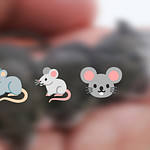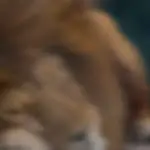Essay about A day in the anthill
One summer day, I ventured out to explore the fascinating world of anthills. With an empty shoebox and a jar, I started looking for ants in the garden behind my house. After searching for almost an hour, I found a large flycatcher in a shady corner of the garden. I enthusiastically set out to observe this wonderful ant society and discover its secrets.
I was amazed when I looked inside the nest and saw several thousand worker ants going about their daily activities. I saw how the ants moved at a steady pace, with a well-defined purpose and incredible organization. With the help of a lens, I was able to see the tiny details of the lemurs and was amazed at the level of complexity of their construction.
I observed how the ants moved along well-established paths, carrying large pieces of leaves and other objects they collected. We also saw how they communicated with each other through scent, through various movements and signals, to coordinate their activities. I understood that these ants were organized into a strong social system, in which each individual had a well-defined role.
After a few hours in the mud, I began to feel like an explorer discovering a new and amazing universe. I learned that these small and seemingly simple creatures are actually very complex and interesting. We realized that there is a whole world unfolding right under our noses, with its own rules and structures.
This experience was truly unique and made me feel connected to nature and the entire universe. The anthill became for me a symbol of work and organization well done, and the ants – models of diligence and perseverance. I understood that every living being has its well-defined role and contributes to the smooth functioning of the entire system.
In conclusion, the day spent in the anthill was a memorable and educational experience that taught me a lot about nature and life. We learned that an entire universe can exist in a very small space and that it is important to be aware of all the living things around us.
Presentation with the title "Life in an anthill"
Introduction:
The anthill is an amazing habitat that is full of activity and harmony. Although it is a small place, millions of ants live here, each with a well-defined role in their society. This paper will explore life in an anthill and detail the structure and social organization of an ant colony.
Anatomy and Physiology of Ants:
Ants are small, robust insects with distinct head, thorax and abdomen. They have six legs and two long antennae that allow them to communicate with each other. Ants are very strong for their size and can lift up to 50 times their body weight. They are also able to regulate their body temperature through heat exchanges with colony members.
The social structure of the ant colony:
An ant colony consists of three main types of ants: the queen, the workers, and the males. The queen is the only ant capable of reproduction and is responsible for laying the eggs. The workers are the ones who are in charge of searching for food, taking care of the young and keeping the nest in order. Males appear in the colony only for mating and do not play an active role in the life of the colony.
Feeding the ants:
Ants feed on a variety of foods, including seeds, insects, fruit, and nectar. The food is collected and brought back to the roost, where it is shared among the members of the colony. The worker ants are the ones who are in charge of collecting the food and transporting it back to the nest.
Ant behavior:
The behavior of ants is governed by a series of chemical signals, called pheromones. These signals are released into the environment by the ants and can be detected by the other ants through their sensitive antennae. Ants communicate with each other through pheromone signals and the sounds made by their rubbing together.
Observation of anthills
When you get near an anthill, it's important to look at it carefully and respectfully. It can contain hundreds or even thousands of individuals, which are busy with various activities inside the nest. Depending on the time of day or the weather, the flycatcher may appear more or less active. It is generally busier during the day, when the ants are at work, and quieter at night, when most ants are resting.
Ants and their social relations
Ants are social insects, meaning they live in well-structured colonies and divide the work efficiently between individuals. Within a colony, there are different classes of ants, such as workers, soldiers or the queen. Each class has its own duties and responsibilities, which are essential to the smooth running of the colony. Ants communicate with each other through chemicals called pheromones, which help them coordinate their movements and transmit information.
The role of ants in the ecosystem
Ants play an important role in the ecosystem as they are involved in several ecological processes. They help aerate the soil, improve its fertility through the composting process and help disperse seeds. Ants are also effective predators, feeding on other insects and thus protecting plants against them.
The importance of protecting the anthill
Anthills are nature's work of art and must be protected. If we step on it or destroy it, we affect the entire ant colony and their habitat. In addition, ants are important for maintaining the ecological balance, so we should respect them and appreciate their role in the ecosystem. It is important to be aware of their presence and try not to disturb their habitat.
Conclusion:
The anthill is a fascinating and lively environment. Within the ant colony, each member has a well-defined role and all actions are performed to ensure the survival and prosperity of the colony. Studying the lives of ants can provide a unique insight into the social life and behavior of animals.
Descriptive composition about An adventure in the world of ants
It is a warm summer day and the sun is shining brightly in the sky. After a short walk through the forest, I sat under a large tree and began to observe the nature around me. In front of me, I spotted a swarm of ants and decided to get closer to get a better look.
With a small gasp, I descended into the anthill and began to explore the world of ants. Around me, dozens of worker ants were moving quickly, carrying large pieces of leaves and other materials inside the nest.
I started watching them closely and noticed how well organized they were. Each ant had a precise role, and all their actions were coordinated with mathematical precision. I was amazed that these small and insignificant insects could have such efficiency and discipline in their work.
As I looked more closely, I noticed an ant carrying a huge piece of leaf, much larger than itself. I followed her down a long, winding path through the thickets and arrived at the room where the food was stored. In that room, I saw several hundred ants carrying and storing the pieces of leaves with astonishing speed and precision.
I stood there, watching in fascination, for several hours, learning about this small and complex world of ants. I left with a greater appreciation for nature and its wonderful ability to produce such incredible and well-organized organisms.
Post Views: 159
More:
- When You Dream of Ants in Your Hair - What Does It Mean |… What does it mean if I dreamed of ants in my hair? Is it good or bad? The interpretation of dreams can vary depending on the individual context and personal experiences of the dreamer. However, here are some possible interpretations of dreams with "Ants in Hair": Problems in everyday life: Dreams with ants in hair can indicate that there are problems or difficulties in everyday life that the dreams reflect in the form of disturbing and stirring ants. Discomfort or itching: Ants in the hair can be a representation of discomfort…
- If I were an ant - Essay, Report, Composition Essay on "If I were an ant" The world seen through the eyes of an ant If I were an ant, I would see the world through different eyes. I would discover things that, as a human, we would never have noticed. I would be small and insignificant, but I would have a unique perspective on the world and people. I could slip through the smallest cracks and discover the secrets of the world below. Seen through my eyes, the world would be a huge place, stretched out to infinity. The trees would be giant towers and the earth would be a shriveled and uneven terrain. I could…
- Ant - Essay, Report, Composition Essay on ants In the world we live in, we may have underestimated some of the smallest creatures. One of them is the ant, an insignificant insect that can be found anywhere around us. But if we take a moment to look more closely at these nimble little creatures, we find that there is much to learn from them. The ant is a fascinating creature that possesses indescribable power and intelligence, and these qualities have much to say about the importance and values of our lives. The ant is a symbol of work and effort. These insects work…
- In my garden - Essay, Report, Composition Essay on "In my garden" My garden - the place where I find my inner peace Behind my house lies a small garden, a corner of my heaven where I find my inner peace and can enjoy the beauty of nature. Every detail of this garden has been created with care and love, from the delicate flowers to the rustic furniture, all combine harmoniously to create a space of relaxation and meditation. I walk among the cobbled paths, feeling the soft grasses and the scents of flowers under my feet. In the middle of the garden is a small fountain, surrounded by…
- A Day in Prehistory - Essay, Report, Composition Essay on A Day in Prehistory - In Search of Lost Mysteries That morning, I woke up with an inexplicable desire to explore time and space in a different way. I wasn't content to live in the present, I wanted to be in another time and place. At that moment, I began to imagine a day in prehistoric times, among dinosaurs and primitive tribes. Thus, I ventured into a fantastic journey through time, into an unknown and mysterious world. I began my journey early one morning, before the sun rose, in a mysterious forest that seemed to…
- If I Were Invisible - Essay, Report, Composition Essay on "If I were invisible - In my invisible world" If I were invisible, I would like to be able to go wherever I want without being noticed by anyone. I could walk around the city or walk through the parks without being noticed, sit on a bench and observe the people around me or sit on a roof and look down on the city from above without anyone bothering me . But before I start exploring my invisible world, I would be afraid of what I would discover about people and the world around me…
- My Library - Essay, Report, Composition Essay on the library I own My library is a wonderful place where I can lose myself in the world of endless stories and adventures. It is my favorite place in the house, where I spend a lot of time reading and discovering new literary treasures. My library is more than just a bookshelf, it is a whole world of knowledge and imagination. In my library you can find volumes of all genres, from the classics of universal literature to the newest arrivals in the field of science fiction or fantasy literature. I love flipping through old books with stories about heroes, dragons and…
- My House - Essay, Report, Composition Essay on my house My house, that place where I was born, where I grew up and where I was formed as a person. It is the place where I always returned fondly after a hard day, the place where I always found peace and safety. It is where I played with my brothers, where I learned to ride a bicycle and where I did my first culinary experiments in the kitchen. My home is a universe where I always feel at home, a place full of memories and emotions. In my house, every room has a…
- A Summer Landscape - Essay, Report, Composition Essay on A Summer Landscape Summer is one of the most beautiful and lively times of the year. It is the moment when nature reveals all its splendor and the fields become a real palette of colors. In this essay, I want to share with you a fairytale summer landscape that I discovered that completely changed my perspective on nature. One hot summer day, I decided to leave the city and head to a rural area at the edge of the mountains, where I heard there was a special summer landscape. After a few hours of driving,…
- My Winged Friends - Essay, Report, Composition Essay on My Winged Friends Nowadays, when most people focus more on friendship with people, I have a special affection for my winged friends. Every time I'm around them, I feel an inner peace that no other experience can replace. I love to walk them, feed them and give them affection. In this essay I will tell about my experiences with my winged friends and how important friendship is with them. I remember my first encounter with a winged friend. It was a…
- A Dream Vacation - Essay, Report, Composition Essay on "A Dream Vacation: When Time Stands Still" Every time I think of a dream vacation, I feel my heart start beating faster and my mind start flying to another universe, full of beauties and non-stop adventures. For me, such a vacation means escaping from everyday life, discovering new places, living unique experiences and recharging my batteries for the next period. On a dream vacation, time stands still, and I can fully dedicate myself to discovering new places and cultures. Whether I choose to travel to…
- Summer at Grandma's - Essay, Report, Composition Essay on Summer at grandparents - an oasis of peace and joy Summer at grandparents is for many of us a special and eagerly awaited time. It is a time when we can relax, enjoy nature and the presence of our loved ones. Our grandparents always offer us an oasis of peace and joy, and summer is the time when we can spend precious time together. Grandma's house is always full of activities and the inviting smell of traditional food. Mornings start with fresh coffee and warm bread from the village bakery. After breakfast, we prepare...
- Swallow - Essay, Report, Composition Swallow Essay The swallow is one of the most graceful and elegant birds I have ever come across. Whenever I see it in flight, I stop everything I'm doing and stare at it, mesmerized by its beauty. In this hectic and noisy world, the swallow seems to have found peace in the high air, like a dancer in love with his own movements. What I admire most about the swallow is the way it moves. It is as if it is made up of a cloud of white flakes, floating slowly through the air. At the same time,…
- My Garden - Essay, Report, Composition Essay on my garden My garden is where I find peace and quiet. It is the place where I can escape from the hustle and bustle of the city and enjoy nature. Ever since I was a small child I was fascinated by plants and I grew up in an environment where the garden was of particular importance. Thus, I inherited this passion and created my own garden, which I take care of with a lot of love and attention. In my garden I planted a variety of flowers and plants, from roses and tulips to vegetables and fruits. During the summer, I like to wake up early…
- King of the Jungle - Essay, Report, Composition Essay on In the fascinating world of the king of the jungle From a young age, I was fascinated by the world of wild animals and the beauty of nature. Among all the animals, the king of the jungle, the lion, has always caught my attention. Through its grandeur and strength, the lion became a symbol of courage and nobility, being known as the "king of the jungle". In this essay, I want to explore the fascinating world of lions and discover more about the king of the jungle. Lions are majestic animals that live in groups called herds. Each herd is led by an adult lion, called the leader, and the dominant female is known as the chief lioness. Outside…







